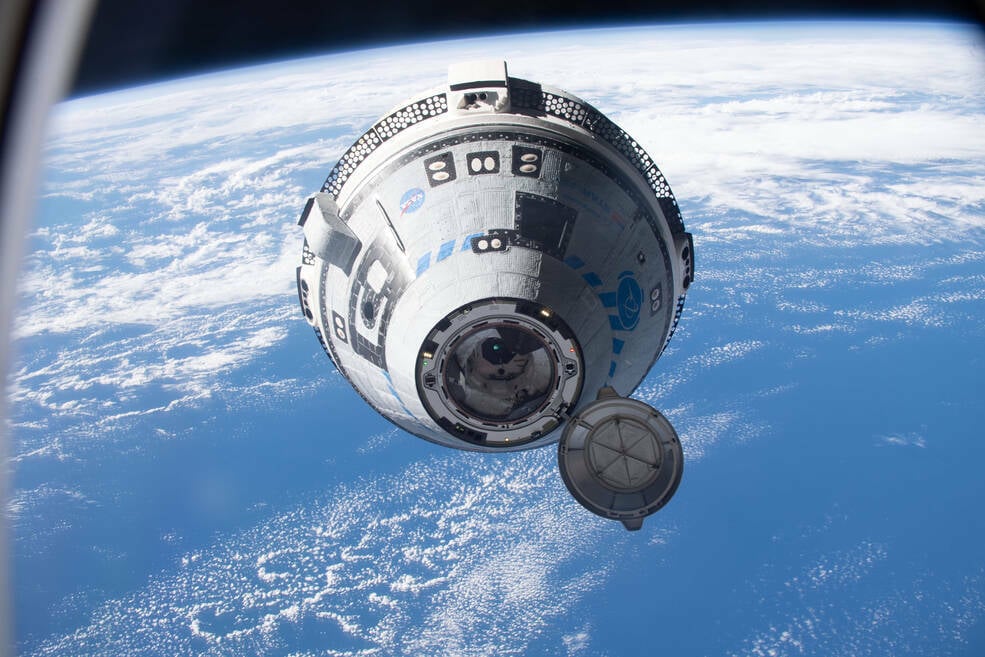Boeing’s CST-100 Starliner project has added a reach-forward loss of $523 million for the aviation giant, taking total losses for the program beyond the $2 billion mark.
The aerospace giant’s Form 10-K, filed with the US Securities and Exchange Commission, revealed the number. A reach-forward loss is when estimates of total costs on a fixed price contract exceed the transaction price, and are declared in the period they occur. Boeing warned last month that bad news was coming but didn’t break out Starliner’s financial stats. Now it has provided the projection.
The loss went up significantly from the $288 million reach-forward loss for Commercial Crew that Boeing reported in 2023. That estimate, it said, was primarily due to expected costs associated with delaying the Crewed Flight Test (CFT) following problems that included parachute issues.
According to the filing, “During 2024, we increased the reach-forward loss by $523 million, primarily to reflect schedule delays and higher testing and certification costs as well as higher costs for post certification missions.”
The aerospace giant said that on December 31, 2024, Boeing had “approximately $398 million of capitalized precontract costs and $150 million of potential termination liabilities to suppliers related to unauthorized future missions.”
The first uncrewed flight of Boeing’s so-called Calamity Capsule back in 2019 went disastrously wrong – the Starliner failed to reach the International Space Station (ISS) and almost ended in catastrophe due to a succession of issues that included problems with the mission timer and software issues.
The company repeated the uncrewed test flight in 2022. That mission went well, although problems with the spacecraft’s thrusters foreshadowed the issues that led to the first crewed test flight in 2024 returning to Earth without a crew onboard. The Boeing duo – NASA astronauts Sunita Williams Butch Wilmore – were instead left on the International Space Station (ISS) and will head for home in a SpaceX Crew Dragon at the end of March (although The Register has seen planning documents that show the crew coming back at the beginning of April.)
Boeing warned that the loss might not be the end of the story, and said in the 10-K filing, “Risk remains that we may record additional losses in future periods.”
While the company fleshed out the numbers in the SEC document, it did not provide a date for when Starliner would launch again, nor say whether it would opt to repeat the Crewed Test Flight in light of the thruster problems and the capsule’s uncrewed return to Earth. At this point, it seems unlikely that the capsule will launch again before 2026, which leaves precious little time for operational missions to the ISS.
Following the expected retirement of the ISS in 2030, the plan was for Starliner to transport astronauts to other destinations, but the vehicle’s lengthy gestation will give would-be customers pause for thought.
At the end of January, Boeing reportedly named John Mulholland, who had led the Starliner program until 2020, as the replacement for previous boss Mark Nappi.
The Register asked Boeing when it plans to launch Starliner again, if it would repeat the CFT mission, and if it might cancel, sell or otherwise spin-off the program.
A spokesperson told us: “NASA has not yet identified a Starliner launch date or mission type.” ®












:max_bytes(150000):strip_icc()/Junk-Drawer-FT-MAG-0225-a8282e05e7e34d23bc05cffd21a4d9c9.jpg)


